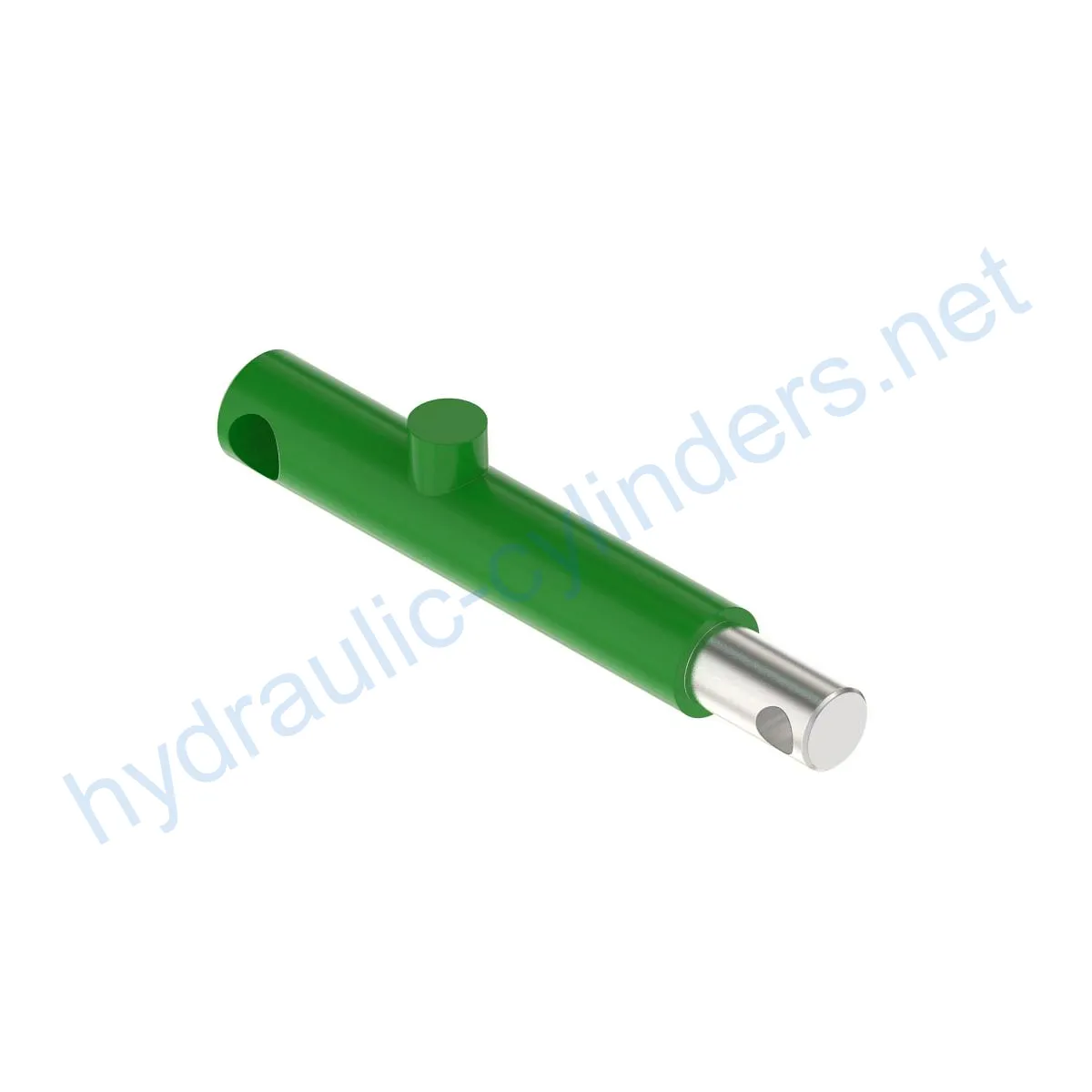Replacement Of AHC15177 Hydraulic Cylinder
Som en af producenterne, leverandørerne og eksportørerne af mekaniske produkter tilbyder vi hydrauliske cylindre og mange andre produkter.
Kontakt os for yderligere oplysninger.
Mail:sales@hydraulic-cylinders.net
Producent, leverandør og eksportør af hydrauliske cylindre.
Replacement Of AHC15177 Hydraulic Cylinder
Introduction
A hydraulic cylinder is a mechanical actuator that is used to provide unidirectional force through a unidirectional stroke. The Replacement Of AHC15177 Hydraulic Cylinder is a high-quality hydraulic cylinder that is designed to replace any damaged or worn-out cylinder in S430 and S440 models.
Specifications and Models
The Replacement Of AHC15177 Hydraulic Cylinder is designed to fit S430 and S440 models. It has a stroke length of 400mm and a bore diameter of 100mm.
Features
1. Improved Equipment Performance: Replacing damaged or worn-out hydraulic cylinders can restore the equipment’s normal operating ability, ensuring its performance in various applications.
2. Enhanced Safety: Regularly replacing hydraulic cylinders can reduce safety hazards caused by cylinder malfunctions, ensuring the safety of operators and equipment.
3. Overload Protection: New cylinder designs typically consider better overload protection mechanisms, improving safety.
4. Quick Installation: Modern hydraulic cylinder designs typically consider ease of installation and replacement, reducing downtime.
5. Standardized Components: Many hydraulic cylinders are standardized products, making it easy to obtain replacement parts on the market.
Applications
1. Excavators: Hydraulic cylinders on the arm or bucket of excavators may be damaged due to long-term use or overload and require replacement to restore normal operation.
2. Cranes: Hydraulic cylinders on the lifting arm of cranes are prone to wear during frequent lifting and lowering processes and require regular replacement to ensure safety.
3. Tractors: Hydraulic cylinders on the front-end loader of tractors may experience leaks or performance degradation during constant lifting and tilting operations and require replacement.
4. Harvesters: During harvesting, the hydraulic system experiences high pressure, and the cylinder may become damaged due to fatigue, necessitating timely replacement to maintain work efficiency.
5. Automated Production Lines: Hydraulic cylinders are used to control robotic arms and other automated equipment. Cylinder faults can affect production efficiency and require immediate replacement.
6. Die Casting Machine: In high-pressure and high-temperature environments, hydraulic cylinders can experience performance degradation. Regular replacement can ensure product quality.
7. Mining Equipment: Hydraulic cylinders are used to lift and move heavy objects in mining equipment. Due to the harsh working environment, regular inspection and replacement is necessary to avoid equipment failure.
8. Bulldozers: Wear on the hydraulic cylinder of a bulldozer’s push arm can cause a decrease in pushing ability that requires timely replacement to maintain work efficiency.
Maintenance
1. Regular Inspection: Regularly inspect the hydraulic cylinder to identify any potential damage or wear and take necessary action.
2. Proper Lubrication: Proper lubrication of the cylinder will prevent corrosion and reduce wear and tear.
3. Seal Replacement: Replacing worn-out seals will ensure the hydraulic cylinder’s longevity and prevent leakage.
4. Calibration Check: Regular calibration checks will ensure the hydraulic cylinder maintains proper operation.
Safety Considerations
When using hydraulic cylinders, safety measures should be a top priority. It is essential to follow proper operating procedures, use protective gear, and regularly inspect the cylinders for damage.
Fault Diagnosis and Common Problems
1. Cylinder Leakage: Leakage in the hydraulic cylinder can be caused by worn-out seals or damage. Regular inspection and replacement of seals can prevent leakage.
2. Cylinder Overheating: Overheating can be caused by various factors, including insufficient lubrication, overloading, or a damaged cylinder. Regular inspection and maintenance can prevent overheating.
3. Low Cylinder Pressure: Low pressure can be caused by cylinder damage, worn-out seals, or other issues. Proper inspection and maintenance can identify the cause and prevent low pressure.
Design Considerations and Selection Standards
1. Load Capacity: The hydraulic cylinder should be designed to handle the load capacity of the equipment it is intended for.
2. Sealing and Durability: High-quality sealing materials and proper surface treatment ensure durability.
3. Safety: Cylinder design should consider safety features, including overload protection mechanisms.
4. Maintenance and Repair: The cylinder should be designed to make maintenance and repair easy.
Installation Guide
1. Proper Alignment: Ensure the hydraulic cylinder is properly aligned during installation.
2. Use of Installation Support: Use appropriate installation support to secure the cylinder.
3. Recommended Inspection, Repair, and Replacement Procedures: Follow recommended inspection, repair, and replacement procedures.
4. Use of Replacement Parts and Rebuilding Services: Use replacement parts and rebuilding services to extend cylinder life.
Company Introduction
Our company is a leading manufacturer and wholesaler of hydraulic cylinders, offering a full range of products to meet domestic and international market needs. We offer professional services, international certification, customizations, production equipment, and excellent after-sales service.
Conclusion
The Replacement Of AHC15177 Hydraulic Cylinder is a high-quality hydraulic cylinder designed to replace damaged or worn-out cylinders in S430 and S440 models. Proper maintenance and safety considerations should be a top priority to ensure its longevity and safe operation.
Take a Tour of Our VR Factory:
Take a tour of our VR factory with the following
Hydraulic Cylinder Application:


